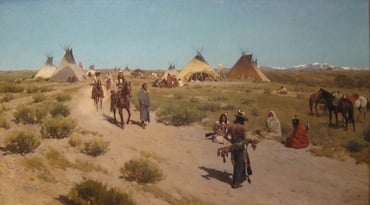Arcana Coelestia # 4822
4822. 'And he called his name Er' means the essential nature of that falsity. This is clear from the meaning of 'calling the name' as the essential nature, dealt with in 144, 145, 1754, 1896, 2009, 2724, 3006, 3421, namely the nature of the falsity of the Church, dealt with immediately above in 4821. The expression 'the nature of the falsity' is used because falsities differ from one another, even as truths do, so much so that the different types of falsity can hardly be counted; and each type of falsity has its own specific nature by which it is distinguished from any other. Common falsities reign among the wicked in every Church, but each person's falsity varies in keeping with the life he leads. The falsity which existed in the Jewish Church and is referred to here was falsity springing from the evil of self-love and of love of the world based on this, see 4818.
Dwell

To “dwell” somewhere, then, is significant – it’s much more than just visiting – but is less permanent than living there. And indeed, to dwell somewhere in the Bible represents entering that spiritual state and engaging it, but not necessary permanently. A “dwelling,” meanwhile, represents the various loves that inspire the person who inhabits it, from the most evil – “those dwelling in the shadow of death” in Isaiah 9, for example – to the exalted state of the tabernacle itself, which was built as a dwelling-place for the Lord and represents heaven in all its details. Many people were nomadic in Biblical times, especially the times of the Old Testament, and lived in tents that could be struck, moved and raised quickly. Others, of course, lived in houses, generally made of stone and wood and quite permanent. In between the two were larger, more elaborate tent-style structures called tabernacles or dwellings; the tabernacle Moses built for the Ark of the Covenant is on this model.






